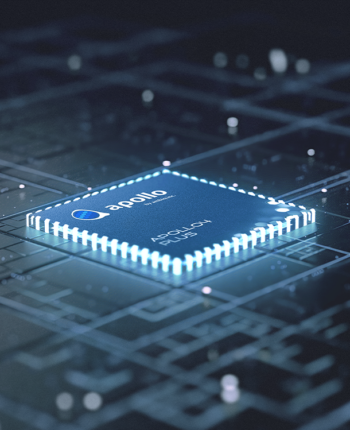The 5-Second Trick For Ambiq apollo 3
The 5-Second Trick For Ambiq apollo 3
Blog Article

far more Prompt: A flock of paper airplanes flutters via a dense jungle, weaving close to trees as should they were being migrating birds.
8MB of SRAM, the Apollo4 has much more than plenty of compute and storage to deal with complex algorithms and neural networks when displaying vivid, crystal-crystal clear, and easy graphics. If further memory is required, exterior memory is supported via Ambiq’s multi-little bit SPI and eMMC interfaces.
Prompt: A litter of golden retriever puppies enjoying within the snow. Their heads come out on the snow, coated in.
You’ll uncover libraries for speaking with sensors, managing SoC peripherals, and managing power and memory configurations, as well as tools for effortlessly debugging your model from your notebook or Personal computer, and examples that tie it all alongside one another.
Sora is often a diffusion model, which generates a video by beginning off with a single that looks like static sounds and step by step transforms it by taking away the noise over quite a few techniques.
Identical to a bunch of industry experts might have encouraged you. That’s what Random Forest is—a set of conclusion trees.
Sooner or later, the model may well learn many far more sophisticated regularities: there are certain types of backgrounds, objects, textures, they manifest in particular very likely preparations, or that they transform in specified methods eventually in videos, and so forth.
Prompt: This shut-up shot of the chameleon showcases its placing colour switching capabilities. The background is blurred, drawing interest on the animal’s hanging look.
For example, a speech model may acquire audio For most seconds prior to performing inference for your handful of 10s of milliseconds. Optimizing both phases is essential to meaningful power optimization.
additional Prompt: Lovely, snowy Tokyo metropolis is bustling. The digicam moves in the bustling metropolis street, subsequent numerous folks making the most of The attractive snowy weather conditions and buying at nearby stalls. Attractive sakura petals are traveling throughout the wind in addition to snowflakes.
network (generally a normal convolutional neural network) that tries to classify if an enter image is true or generated. By way of example, we could feed the 200 produced images and 200 serious photos into your discriminator and prepare it as an ordinary classifier to distinguish involving the two sources. But In combination with Ambiq that—and right here’s the trick—we might also backpropagate via equally the discriminator and the generator to discover how we must always change the generator’s parameters to help make its 200 samples somewhat much more confusing with the discriminator.
People merely level their trash item at a computer screen, and Oscar will tell them if it’s recyclable or compostable.
We’ve also created sturdy impression classifiers which have been utilized to review the frames of every video generated to aid be certain that it adheres to our use procedures, just before it’s proven on the consumer.
If that’s the situation, it really is time scientists centered not just on the scale of the model but on what they do with it.
Accelerating the Development of Optimized AI Features with Ambiq’s neuralSPOT
Ambiq’s neuralSPOT® is an open-source AI developer-focused SDK designed for our latest Apollo4 Plus system-on-chip (SoC) family. neuralSPOT provides an on-ramp to the rapid development of AI features for our customers’ AI applications and products. Included with neuralSPOT are Ambiq-optimized libraries, tools, and examples to help jumpstart AI-focused applications.
UNDERSTANDING NEURALSPOT VIA THE BASIC TENSORFLOW EXAMPLE
Often, the best way to ramp up on a new software library is through a comprehensive example – this is why neuralSPOt includes basic_tf_stub, an illustrative example that leverages many of neuralSPOT’s features.
In this article, we walk through the example block-by-block, using it as a guide to building AI features using neuralSPOT.
Ambiq's Vice President of Artificial Intelligence, Carlos Morales, went on CNBC Street Signs Asia to discuss the power consumption of AI and trends in endpoint devices.
Since 2010, Ambiq has been a leader in ultra-low power semiconductors that enable endpoint devices with more data-driven and AI-capable features while dropping the energy requirements up to 10X lower. They do this with the patented Subthreshold Power Optimized Technology (SPOT ®) platform.
Computer inferencing is complex, and for endpoint AI to become practical, these devices have to drop from megawatts of power to microwatts. This is where Ambiq has the power to change industries such as healthcare, agriculture, and Industrial IoT.
Ambiq Designs Low-Power for Next Gen Endpoint Devices
Ambiq’s VP of Architecture and Product Planning, Dan Cermak, joins the ipXchange team at CES to discuss how manufacturers can improve their products with ultra-low power. As technology becomes more sophisticated, energy consumption continues to grow. Here Dan outlines how Ambiq stays ahead of the curve by planning for energy requirements 5 years in advance.
Ambiq’s VP of Architecture and Product Planning at Embedded World 2024
Ambiq specializes in ultra-low-power SoC's designed to make intelligent battery-powered endpoint solutions a reality. These days, just about every endpoint device incorporates AI features, including anomaly detection, speech-driven user interfaces, audio event detection and classification, and health monitoring.
Ambiq's ultra low power, high-performance platforms are ideal for implementing this class of AI features, and we at Ambiq are dedicated to making implementation as easy as possible by offering open-source developer-centric toolkits, software libraries, and reference models to accelerate AI feature development.
NEURALSPOT - BECAUSE AI IS HARD ENOUGH
neuralSPOT is an AI developer-focused SDK in the true sense of the word: it includes everything you need to get your AI model onto Ambiq’s platform. You’ll find libraries for talking to sensors, managing SoC peripherals, and controlling power and memory configurations, along with tools for easily debugging your model from your laptop or PC, and examples that tie it all together.
Facebook | Linkedin | Twitter | YouTube